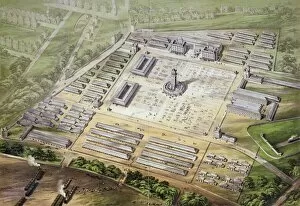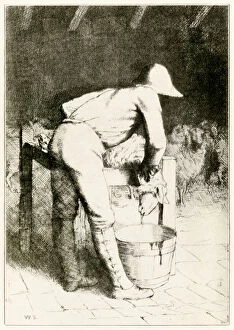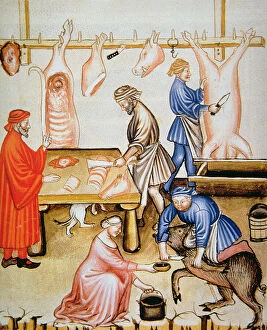"The Slaughter House: A Glimpse into the Dark Reality of Meat Production" Step back in time and explore the haunting world of slaughterhouses through a collection of captivating images. From an isometric view of the New Metropolitan Cattle Market in 1855 to a wood engraving depicting hogs being cut up at a meatpacking plant in Chicago, these glimpses into history shed light on an industry often hidden from public view. One engraving transports us to Cawnpore, where the infamous massacre took place within the walls of a slaughterhouse. The image serves as a chilling reminder of the violence that can occur within these walls, both towards animals and humans alike. Le Vocabulaire Illustre brings us face-to-face with abattoirs from around the world, showcasing their architectural diversity. From France to Germany and Argentina, each structure tells its own story about how different cultures approach this necessary but controversial aspect of food production. In literature, even renowned works like "The Pilgrim's Progress" feature scenes involving butchers and sheep. These illustrations remind us that slaughterhouses have long been woven into our collective consciousness as symbols of sacrifice and mortality. Moving away from engravings, we catch glimpses through photographs too. Leadenhall Slaughter House stands tall in black-and-white imagery from 1870-90 while postcards depict bustling stockyards and abattoirs in Chicago during its meatpacking heyday. Yet amidst all this darkness lies hope for change. Historic livestock buildings transformed into modern spaces show how society evolves alongside our understanding of animal welfare. Francisco Salamone's contemporary architecture examples in Azul, Argentina demonstrate innovative approaches to blending functionality with aesthetics. As we ponder upon these images spanning centuries and continents, let us not shy away from confronting uncomfortable truths about our relationship with animals for sustenance. The ox moans inside the slaughterhouse.
















